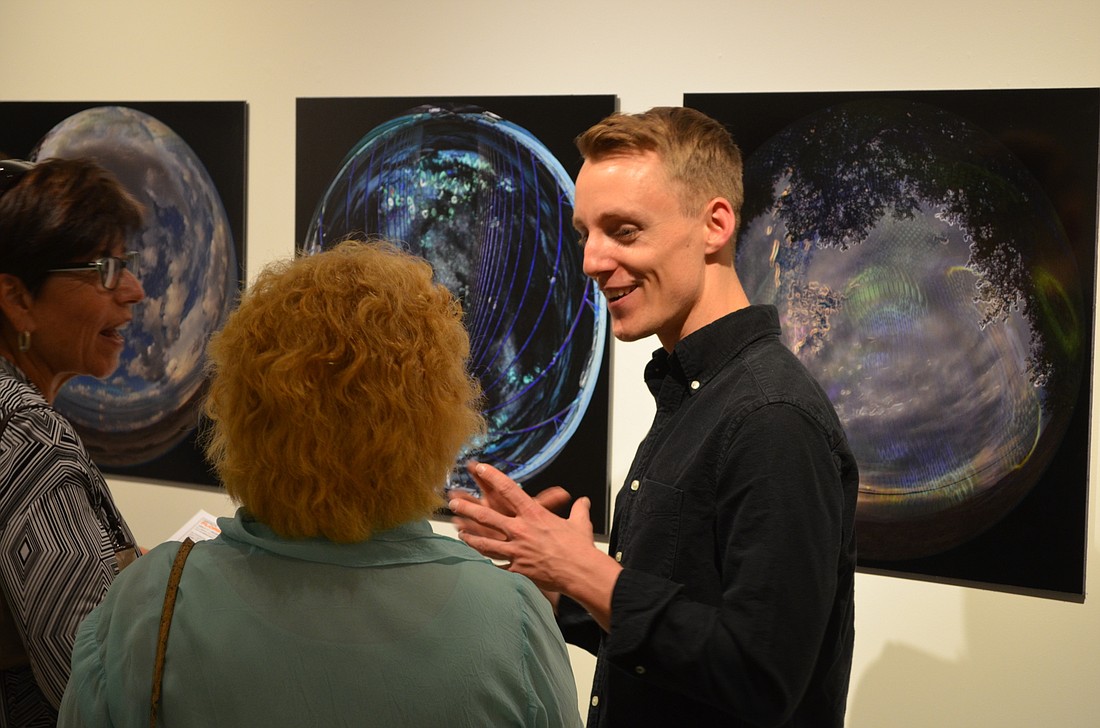- April 4, 2025
-
-
Loading

Loading

Humans have an interesting relationship with technology. It’s probably best described as a love/hate dynamic. It’s no new concept that the devices created to connect us have begun to isolate us, and that’s typically the conversation you hear today — one of pushback.
But Art Center Sarasota’s new exhibition, #postdigital, has a different tone. Featuring art all created by artists who’ve incorporated digital technology in some fashion, the three-gallery show explores our technology-saturated culture through the eyes of the participating artists.
We’ve all integrated technology into our lives — perhaps to the point of its use being second nature. How has that affected our artists? What new opportunities does it present?
For curator Dustin Juengel, who organized the show as a collaboration between the Faulhaber Fab Lab and students and professors from Ringling College, New College and IMG, the overall theme of the exhibition is a positive one.
“I wasn’t sure what to expect before the pieces started coming in,” he says. “But I haven’t seen a lot of criticism. The pieces are very playful. Technology is an opportunity, too, but you need to negotiate that relationship to where you’re driving it — and it’s not driving you. If you’re not intimidated by it, there’s a whole landscape of opportunities.”
The work is divided somewhat thematically among the three gallery spaces. The first is the most apparent representation of the relationship between people and technology.
One installation is a color map created from a data algorithm of the artist’s Facebook news feed. It’s located just next to Sarah Valdez’s piece: a mold of a woman’s chest, outfitted with a wearable LED necklace. The interactive piece invites viewers to approach the nude torso (proximity is definitely at play, here), insert your finger into a sensor and see your pulse blinking back at you.
You can hide behind a Facebook profile. There’s no hiding when your heart is quite literally on your sleeve.
The second gallery features projections by Ringling students in a mix of performance and purely visual pieces. There’s even a section devoted to analog technology.
Lance Ford Jones and Claudia Cumbie-Jones have been creating electronic art for nearly 35 years, and their two pieces are an interesting span of that career. One piece uses video-editing equipment from the ’70s to display a mix of sound, footage and video feedback that they created nearly as long ago. The other is a series of stills from immersive, 360-degree videos, created with a special Go-Pro rig.
“We love that play between digital and analog,” says Cumbie-Jones. “It’s inevitable that there will be backlash against digital technology, because it’s so ubiquitous. I definitely have a love/hate relationship with it, but I think it’s optimistic in general.”
The show, which runs through June 25, is a thought provoking, refreshing look at life in the digital age.
“There’s a lot of discussion about how technology is diminishing our social interactions,” says Juengel. “Here, technology is the reason all these people came together, whether it’s to work, collaborate or even admire.”